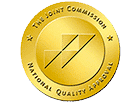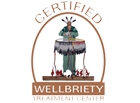Meth addicts are perhaps the most stigmatized, and the least understood substance abusers when it comes to addiction. Those addicted to meth are often seen as dangerous, crazy, reckless, violent, erratic, and beyond help; giving others the impression that recovery from methamphetamine is not likely. These perceptions of meth leave users crystallized in their ways, believing that rehabilitation for meth is impossible or meth addiction treatment will be met with judgement and criticism on all ends. Royal Life Centers is dedicated to breaking the stigma of addiction, especially the stigma of meth addiction— as we know stereotypes are seldom accurate, and addiction recovery is very possible.
The Concrete Stigma
Addiction is stigmatized in general, but meth users face a specific stigma that teaches others to judge, fear, and criticize them especially. The stereotypes surrounding meth use vary, with common perceptions of meth users being “tweakers” who are severely malnourished, missing teeth, pick their faces to the point of bleeding, talk to themselves as they wander the streets and in a heavy state of psychosis. Crystal meth use, like any substance use disorder, is never uniform. There is no “one face of meth” that can be the visual representation of meth addiction. “The visual and verbal rhetoric applied in anti-drugs campaigns or pop-cultural films have both originated and reproduced stereotypical assumptions about drug users. These stereotypes harm drug users and exacerbate the harm-reduction work; furthermore, they shape the popular and scientific discourse about drug use” (Scheibe).
The Faces of Meth
Many images have surfaced, with a project being called “The Faces of Meth™”— which depicts a before and after format of meth users who show rotting teeth, bad skin, and malnourishment on the after side of meth. When looking at methamphetamine abuse, we cannot subscribe to one visual representation, there are many faces of meth use. Many individuals who you would never believe have ever touched the drug could be daily users and true meth addicts. In my own experience, I have met some incredibly successful people who are addicted to meth. These people accredit their addiction to meth often as a sexual aid, or the medicine that keeps them awake enough to work through out the night, or the drug that enhances their social lives. The faces of meth, like any drug, vary greatly.
The Faces of Meth™ program “…is a drug education programme first launched in 2004 by the Multnomah County (Oregon) Sheriff’s Office. The aim of the project was to deter potential users, in particular young children and teenagers, by showing them graphic images of the corporeal decay, supposedly caused by meth use” (Scheibe). The intention behind this program was to prevent people (particularly youth) from using methamphetamines, however, this campaign inadvertently reinforced stereotypes for meth users.
Signs of Meth Use
Meth use can be suspected if a person is showing the following signs:
- hyperactivity
- drastic weight loss
- dilated pupils
- excessively talkative
- increased distractibility
- tooth decay or tooth loss
- aggression, irritability, and agitation
- grandiose behavior
- twitchiness
- extreme paranoid
- severe mood shifts
- jumpy eyes
- scratching, itching, or picking at skin
- not meeting obligations at work, home, or school
- consistent absenteeism
- impulsivity
- bizarre and erratic behavior
- repetitive pattern of behavior that can last for hours
- sleep deprivation
Stimulant Use Disorder
Like any substance use disorder, meth or stimulant use disorder can be diagnosed using the Diagnostic and Statistical Manual of Mental Health Disorders. If two or more criteria are met within a 12-month period, you may have a meth use disorder.
The following include criteria of a stimulant use disorder:
- taking more stimulants than intended— using larger amounts of the substance for longer amounts of time
- attempted to cut down or control use but were unsuccessful in doing so, despite wanting to
- spent excessive amounts of time to activities surrounding stimulant use
- had a strong urge or craving to use meth
- failed to fulfill obligations at home, school, or work due to meth use
- continuing to use meth, even though it has caused relationship or interpersonal problems
- gave up or reduced important recreational, social, or work-related activities because of meth use
- use meth in a physically hazardous way— using meth even in situations that are dangerous to yourself and/or others, such as driving under the influence or blacking out
- continued to use meth, even while knowing that it is causing or worsening a physical or psychological problem
- developed a tolerance to meth— requiring more and more meth to get the same feeling
- withdrawal from meth if you don’t take them
Effects of Meth
Immediate side effects of meth use include:
Long term effects of meth include:
(“Meth Symptoms and Warning Signs”).
Receiving Treatment for Meth Addiction
Many meth addicts are discouraged from seeking treatment in a drug rehab, as they know that there are no medications used in either medication-assisted detox or medication-assisted treatment, that are specific to treating a meth addiction. There is a huge need for adequate addiction treatment for meth abuse. At Royal Life Centers, we first treat a guest’s methamphetamine withdrawal, closely monitoring guests 24/7 as symptoms of withdrawal can produce suicidal thoughts, severe mood swings, and psychosis, among other symptoms. During a meth detox, “The symptoms gradually get better within a few days or weeks, he says, but their ‘persistence is what ultimately drives people to return to use (meth) because they feel so poorly, emotionally and energetically'”; this is why we provide intensive therapies through out our medical detox program (Newman). The withdrawal process from meth is a challenging stage of the recovery process, but at Royal Life Centers, we effectively help guests recover from a physical, emotional, and spiritual dependence on methamphetamines.
“Methamphetamine is not a new drug to the United States. Yet with cheaper and more potent forms from Mexico flooding U.S. communities in recent years – as well as instances of people using meth alongside opioids or other substances – its growing presence highlights the challenges of providing adequate treatment for those who want to enter recovery” (Newman). The National Institute of Health and Human Services recommends at least 90 days of addiction treatment for meth addicts, which is why we offer a variety of addiction treatment programs that are designed to follow guests through the stages of the recovery process.
Breaking the Stigma
“The problem with stigma attached to substance use is that it can create a social context where people who use substances do not, or cannot, reach out for the help and care that they need—increasing the harms that can come to people who use drugs (Land). Tim Pursell, a former professor of European history spoke out as a former crystal meth addict, wanting to show the various sides to meth addiction and break down the stigma, says “There’s stigma around using drugs in our society, but if you use meth—especially if you inject it—you’re at the bottom of the barrel. I think it’s about fear. People assume that if you inject meth you have terrible teeth and that you’re crazy. They have this stereotypical image of what a meth user looks like in their head, and that’s not always the case” (Land). “Pursell first started using meth nearly 20 years ago. In graduate school, meth helped him escape the stress and burden of everyday life. Suffering from depression at the time, the rush meth brought made him feel happy. It made sex better by helping him overcome inhibitions he had in the bedroom” (Land). Tim Pursell’s story is only one of many meth addicts, showing that stereotypes are not accurate when it comes to the many faces of meth addiction. Moreover, his story shows that recovering from meth is possible.
How We Treat
At Royal Life Centers, we have treatment programs including: medical detox, a residential inpatient program, a partial hospitalization program (PHP), an intensive outpatient program (IOP), an outpatient program (OP), sober living and graduate housing, and alumni services. Our comprehensive addiction treatment centers allow addicts to rebuild their lives, rooted in happiness, health, meaning and sobriety.
Our treatment programs all offer intensive therapies, including: individual therapy sessions, group therapy, behavioral therapies, support groups, adventure therapy, activity therapy, and equine therapy. Meth is highly addictive, so we emphasize a wide range of coping skills and tools to deter and prevent relapse in meth addicts— giving addicts the chance to learn and understand their triggers, so that they can handle them while maintaining sobriety. Our drug rehab centers offer both inpatient and outpatient treatment options for overcoming an addiction to methamphetamine.
Reach Out
Don’t let the stigma and challenges in treating your meth addiction leave you crystallized. Recovery is possible, and Royal Life Centers will be here to guide and support you through each step of the way.
If you or someone you know is struggling with an addiction, please reach out to our addiction specialists at (877)-RECOVERY or (877)-732-6837. Our team of addiction specialists are available to take your call 24 hours a day, 7 days a week. Because We Care.
References:
Land, Emily. “Fighting Stigma: A Former College Professor Opens Up about Meth Use.” BETA Blog, San Francisco Aids Foundation, 27 Nov. 2015, betablog.org/fighting-stigma-a-former-college-professor-opens-up-about-meth-use/
Lisa Scheibe, (2017) “Visualising “junkies” and “meth heads” – a visual analysis of the persistent negative reputation of heroin and meth users”, Drugs and Alcohol Today, Vol. 17 Issue: 1, pp.40-49, https://doi.org/10.1108/DAT-11-2016-0027
“Meth Symptoms and Warning Signs” AddictionCenter, AddictionCenter, www.addictioncenter.com/drugs/meth/symptoms-signs/
Newman, Katelyn. “As Meth Use Sees a Revival in the U.S., Treatment Options Are Limited.” U.S. News & World Report, U.S. News & World Report L.P., 24 Apr. 2019, www.usnews.com/news/healthiest-communities/articles/2019-04-24/meth-treatment-options-limited-as-drug-sees-us-resurgence




